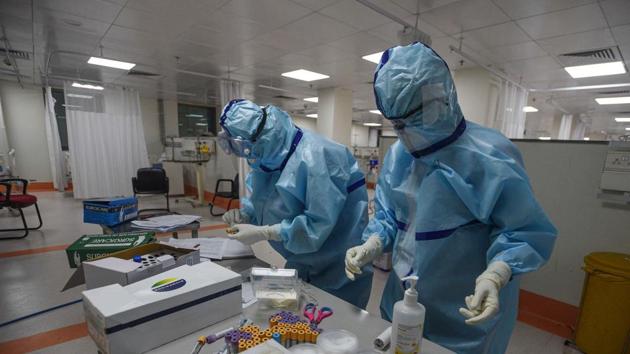Centre issues guidelines to urban local bodies to contain Covid-19
The government said that these urban localities are often overcrowded, with many people crammed into very small living spaces.
The Union ministry of health and family welfare released a document on Saturday delineating focus areas that need to be addressed by the urban local bodies for preparedness in these settlements for responding to Covid-19 the country’s tally in the pandemic reached 86,000.

Among the measures that the ministry of health and family welfare underlined for urban settlements for prevention and control of Covid-19 are institutional mechanism, incident response system, coordination mechanism, Covid-19 containment plan, surveillance, hospital preparedness and clinical management, pharmaceutical and non-pharmaceutical intervention.
The government said that these urban localities are often overcrowded, with many people crammed into very small living spaces. A substantial percentage of this population is migrant workers employed in the industrial and other informal sector.
Coronavirus outbreak: Full coverage
“These areas are characterized by poor structural quality of housing, inadequate access to safe water, poor sanitation and insecure residential status. There are gaps in health and healthcare services,” the document said.
It acknowledged that in the context of Covid (or any other respiratory infectious disease for that matter) implementing strategic interventions such as surveillance, physical distancing, isolation, quarantine and communicating the risk to the dwellers could be challenging.
It also cautioned that social distancing will be a major challenge due to many people crammed into very small living spaces. It said social distancing should be practiced particularly in community water points, public toilets, PDS distribution points, health centers etc. It called for social distancing to be promoted at all formal and informal gatherings.
The document also said a quarantine facility (school, stadium, etc.) in a nearby area needs to be identified, where a large number of high risk contacts can be accommodated. Shifting of high risk contacts (elderly and those with co-morbid conditions) is a crucial intervention to minimize the spread of disease in such persons, thereby limiting morbidity and mortality among them. A contingency plan will also be in place to move high risk populations to alternate or temporary sites.
It stressed on the use of masks should be made mandatory and said common mask distribution sites and disposal sites should be identified and all dwellers may be made aware about the same.
Community cleaning and disinfection drive needs to be undertaken on a daily basis. In particular, the community toilets need to be cleaned at-least three to four times a day.
The civil dispensaries, health posts, health and family welfare centers will also be used as depot holder for Hydroxychloroquine, masks household disinfectants etc.
It said community groups are key to creating awareness on Covid among these populations. “Use of local (political, religious and opinion) leaders for communicating all aspects of the Covid prevention and control is vital as dwellers are more inclined to trust them. Under these leaders, community cadres need to be created for community engagement,” it said.






